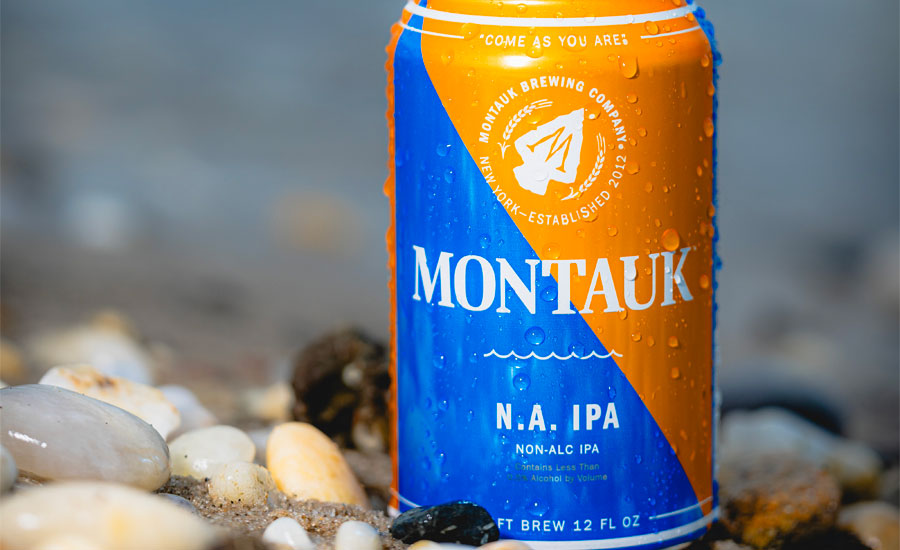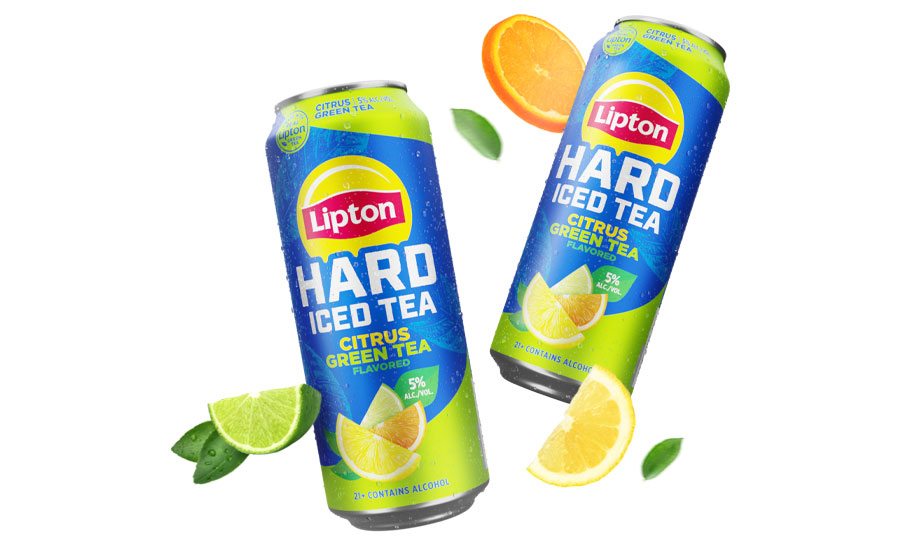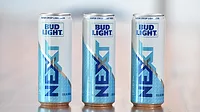2024 State of the Beverage Industry: Beer market continues to experience unbalanced performance
FMBs, imports continue to lift beer category

Image courtesy of Getty Images
For 2023, the U.S. beer market’s resume reflected a layered year. In its December 2023 report titled “Beer – US – 2023,” Chicago-based Mintel details the unbalanced results the category experienced this past year.
“After a few years of uncharacteristic gains, the beer category is settling back into slowed growth consistent with pre-pandemic patterns,” the report states. “It’s an unbalanced market; divided with beer purists tethered to habits in brands and style choice, and those who are seeking BFY, more flavorful pastures within beer, or elsewhere. To remain on the positive side of growth, brands must help both groups re-imagine beer occasions.”
Brian Sudano, CEO and president of S&D Insights LLC, Norwalk, CT, explained in Beverage Industry’s March 2024 issue that in 2023, “beer declined in the 3 to 4% range in line with wine, while spirits outperformed experience growth driven by RTDs.”
In terms of retail dollar sales, Ryan Toenies, client insights consultant for Circana; and Cara Piotrowski, client insights consultant for Circana, Chicago, noted that spirits was still the top performer, but that beer fared better than wine.
“Beer dollar trends were plus 2.6%, which was better than wine at -0.8%, but less than spirits at plus 6%,” they said. “Overall, beer gained dollar share of beverage alcohol plus 0.1 points.”
Top Beer Brands
Source: Circana, Chicago. Total U.S. supermarkets, drug stores, gas and convenience stores, mass merchandisers, military commissaries, and select club and dollar retail chains for the 52 weeks ending May 19.
For the 52 weeks ending May 19 in total U.S. multi-outlets, Circana data shows dollar sales for the overall beer category was $45.8 billion, an increase of 1.3%, while case sales were down 1.7%. Despite these mixed results, this is an improvement from what was reported in Beverage Industry’s 2023 Beer Report, which showed a dollar sales increase of 0.8%, totaling $44.6 billion, and case sales down 4.8% for the 52 weeks ending Jan. 1, 2023.
Circana’s Toenies and Piotrowski noted in Beverage Industry’s March 2024 issue that the positive performer for the beer market included imports and flavored malt beverages (FMBs).
Import beer sales totaled $11.2 billion, a 10% increase, while case sales were up 7.6%. Meanwhile FMB sales totaled $4.6 billion, a 15.9% increase, while case sales were up 13.6%.
“Beer continues to show strong growth within Imports (driven by brands like Modelo Especial), FMBs (flavored malt beverages) are also showing growth driven by Twisted Tea and NA Crossovers like Monsters The Beast and Hard Mountain Dew are helping the segment grow,” they said. “We expect these trends to continue in 2024.”
Top Imported Beers (Brand family)
Source: Circana, Chicago. Total U.S. supermarkets, drug stores, gas and convenience stores, mass merchandisers, military commissaries, and select club and dollar retail chains for the 52 weeks ending May 19.
What is driving the import beer market has been the performance of Mexican beers.
“Mexican imports have been the core driver of the overall import business,” said Jon Berg, vice president of BevAl Thought Leadership at NielsenIQ; and Kaleigh Theriault, director of BevAl Thought Leadership at NielsenIQ, Chicago, in Beverage Industry’s March 2024 issue.
Circana’s Toenies and Piotrowski also noted that Mexican imports were up 14.2% in 2023, driving much of the segment’s growth, and highlighted some brands that contributed to that performance.
“Modelo Especial was the top dollar growth brand again in 2023 and is now the No. 1 dollar brand in the U.S.,” they said. “Three other Constellation Brands Mexican Imports were in the Top 10 Dollar Share gainers in 2023: Modelo Oro, Pacifico and Corona Extra.”
S&D Insights’ Sudano pinpointed how demographics are playing into Mexican imports popularity.
“Demographic and cultural shifts are two major tailwinds for Mexican imports,” he said in Beverage Industry’s March 2024 issue. “On the cultural side, Mexican food and style have crossed over to the general market. At the same time, they represent 26% of Gen Z consumers and growing as percentage each year.”
Despite Mexican imports’ success, Sudano cautioned of the longevity of this performance. “The biggest challenge is how to continue growing Mexican imports while the total beer category continues to decline,” he said.
When it comes to FMBs, the success has been tied to the flavor profiles and licensing agreements, experts noted.
Top Flavored Malt Beverages (Brand family)
Source: Circana, Chicago. Total U.S. supermarkets, drug stores, gas and convenience stores, mass merchandisers, military commissaries, and select club and dollar retail chains for the 52 weeks ending May 19.
“Brand equities that have crossed over from other categories have seen success in FMBs and seltzers, including Topo Chico, Simply, Mtn Dew, Monster, Lipton, Arizona, to name a few,” Circana’s Toenies and Piotrowski said in Beverage Industry’s March 2024 issue. “Bold flavor forward profiles, no/low sugar, and lower calories are also trending; counter to that, high ABV products are also in demand.”
In terms of leading flavor profiles in the FMB and hard seltzer space, Toenies and Piotrowski identified hard teas, hard lemonades, cocktail-styled, peach, pineapple, honey and mango. “Spiked Peach VP, Cayman Jack Margarita, Mike’s Hard Lemonade Zero Sugar and Jarritos Hard Soda VP [were] top innovations in 2023,” they added.
To continue its ascension, Toenies and Piotrowski noted that FMBs could tap into health-focused innovations.
“FMBs that can tap into bold flavors and health focused attributes (no/low sugar) will continue to see success,” they said. “Brands like Twisted Tea and Mike’s have epitomized growth over decades and continue to innovate as consumers gravitate to hard tea and lemonade platforms.”
S&D Insights’ Sudano noted in Beverage Industry’s March 2024 issue that consumer’s interest in new flavors will keep FMBs and hard seltzers relevant with consumers.
“Consumer desire for new taste experiences and drinks that are easy to consume, versus acquiring a taste for traditional beer, along with the convenience of an RTD format will drive continued growth and share gains over the next three years,” he explained.
Another positive for the beer category, albeit from a much smaller base, has been non-alcohol beers. For the 52 weeks ending May 19, Circana data shows dollar sales totaling $400.8 million, a 29.1% increase, with case sales up 21.8%.
Experts noted that the proliferation of non-alcohol beer has allowed the category to retain consumers as beer contends with more competition in recent years.
“It is keeping more people in the beer category versus recruiting consumers that will then transition to drink alcoholic beer,” Sudano said in Beverage Industry’s March 2024 issue. “It is very much occasion driven.”
Circana’s Toenies and Piotrowski also noted that non-alcohol beer is more about keeping beer consumers in the category than recruiting new ones.
“Non-alcoholic beers are benefiting from switching within the beer market, so these products are likely aiding in beer buyer retention,” they said in Beverage Industry’s March 2024 issue.
“Some consumers might switch entirely to non-alcoholic beers, substituting them for their regular alcoholic consumption, thereby causing a net loss in traditional beer sales,” they continued. “Non-alcoholic options might create a distinct market segment rather than directly converting people to traditional beer, leading to parallel growth rather than direct substitution.”
With non-alcohol beer sales continuing to build, experts note that this stems from a variety of health-focused trends, prompting consumers to opt for alcohol-free solutions.

“Broader trends in healthier lifestyles (e.g. Dry January, Sober October movements, alcohol moderation trends) are fueling growth of the non-alcoholic beer segment,” Circana’s Toenies and Piotrowski said in Beverage Industry’s March 2024 issue. “Scale brewers are responding to consumer demand with recent launches of Corona NA, Sam Adams Just the Haze IPA, Guinness NA and Athletic Brewing.”
NielsenIQ’s Berg and Theriault echoed similar sentiments noting that “health and wellness, lifestyle choices, mindful drinking, improved taste, functional ingredients and much better distribution” are fueling non-alcohol beer’s growth.
Delving further in the motivation for non-alcohol beer purchases, Berg and Theriault added that the segment is not facing the same competition from other non-alcohol beverage segments.
“Habit and preference from consumers, social pressure, marketing and branding, all enter in the equation,” they said in Beverage Industry’s March 2024 issue. “Most NA consumers also drink alcohol products so it is more a matter of moderation and balance rather than competition.”
However, not all beer segments fared as well this past year. Total domestic beer sales reached $25.7 billion, a 2.3% decrease, with case sales down 4.3%. Among the sub-segments that comprise total domestic beer, all saw case sales in decline with only domestic sub-premium seeing marginal dollar sales growth.
Domestic premium saw the biggest declines with sales totaling $11.4 billion, down 3.9%, with case sales down 6%. The craft sub-segment of domestic beer also continues to face challenges. For the 52 weeks ending May 19, Circana data shows dollar sales for craft beer at $4.7 billion, a decrease of 1.3%, while case sales were down 3.2%.
Circana’s Toenies and Piotrowski noted in Beverage Industry’s March 2024 issue that mergers and acquisitions (M&A) activity was on the rise “as seen by Tilray acquisition of eight former ABI craft brands in 2023 and Kirin Holdings/Lion acquisitions of top craft brewers New Belgium and Bell’s in recent years.
“New Belgium and Bell’s are top growth brand families in the craft segment, suggesting Kirin’s investment has been a net positive,” they continued. “However, consolidation of craft brewers will put pressure on brands to delivery growth or risk being delisted or discontinued.”
NielsenIQ’s Berg and Theriault meanwhile noted consumers are less observant of M&A changes and remain brand centric. However, the thought leaders echo sentiments of the benefits that local brands and flavors will have on craft beer.
“Localization and regional brands have worked hard to find a niche and gain consumer loyalty,” they said in Beverage Industry’s March 2024 issue. “New flavors in a rotation and with significant diversification (read as mixed multi packs) have been important to maintaining consumer appeal.”
Berg and Theriault elaborated that the flavor focus in ready-to-drink (RTD) segments have helped craft brewers embrace this opportunity ― though IPAs still dominant the segment.
“IPA has been a significant style leader, but flavors are driving a lot of the growth regardless of style type,” they said. “RTD and other categories have created a very flavor forward consumer in the U.S.”
However, the beer segment that faced the most challenges this past year has been hard seltzers. According to Circana data, beer seltzer centric sales were down 14%, totaling $3.3 billion, with case sales down 18.5%.
As an RTD beverage alcohol format, S&D Insights tracks hard seltzers as part of the FMB market, however, NielsenIQ and Circana track them separately.

“Hard seltzer remains the largest individual segment of FMBs although not as big as the rest of the FMB market,” Sudano said in Beverage Industry’s March 2024 issue. “Hard tea is the fastest growing segment thanks to the strength of Twisted Tea. Other entries including Hard Lipton Ice Tea and soon Monster’s Nasty Beast will add more momentum to this section. Traditional FMBs have also been growing along with hard lemonade and hard soda.”
Meanwhile, the hard cider segment has made attempts to recover following another year of volume declines. For the 52 weeks ending May 19, case sales were down 1.2%, however, dollar sales were up slightly ― 0.8% ― totaling $495.9 million.
“Ciders face challenges in perception as a seasonal beverage with a limited and very sweet flavor profile,” Circana’s Toenies and Piotrowski said in Beverage Industry’s March 2024 issue.
But the two noted that the segment’s variety allows it to overcome this limitation.
“Offering variety in sweetness, flavor combinations, and ABV levels helps to overcome some of these challenges and introduce cider to new audiences,” they explained.
Toenies and Piotrowski anticipated that hard cider will see more of these approaches with new innovations.
“[Hard cider will] continue to see innovation in ABV levels, fermentation, sweet versus dry and lightness; and flavor combinations with tropical fruits, honey and berries,” they said.
Looking for a reprint of this article?
From high-res PDFs to custom plaques, order your copy today!






